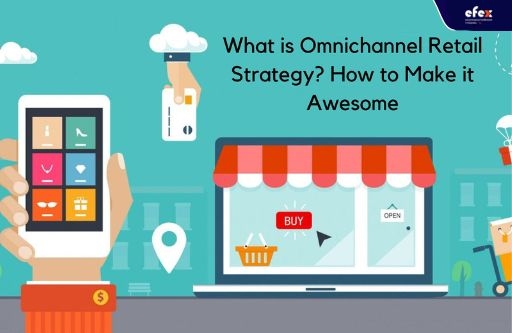
A decade ago, if you had said that retail purchasing would be done on smartphones, tablets, social media platforms, and other devices, you would have been feeling weird. However, that's exactly just what is taking place right now - online shopping. What you may wonder is that physical shops are gone? Of course, no, people still make in-store purchases. Instead, before making a purchase, customers compare brands and prices, read reviews, and check social media.
If you're not there, the customer experience and your revenue will suffer due to your limited availability. In such cases, you may hear about omnichannel. It has an innovative, fresh, and trendy sound. But what is an omnichannel retail strategy exactly? Let's examine an omnichannel retail strategy for your company's growth from a what, why, and how aspect.
Omnichannel retail strategy refers to the sales and marketing approach to a seamless and integrated customer experience across all channels of your organization.
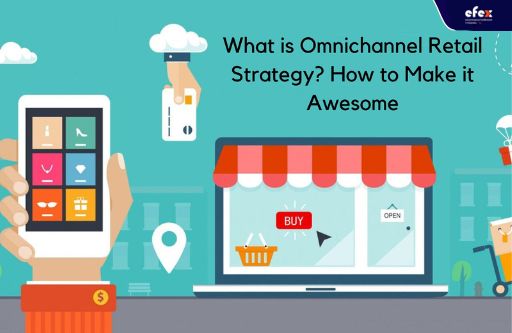
Omnichannel retail strategy refers to the sales and marketing approach to a seamless and integrated customer experience across all channels of your organization. Whereas all omnichannel experiences employ multiple platforms, not every multi-channel activity is considered to be omnichannel, hence the keyword here is "cross-channel" as opposed to "multi-channel." To provide a continuous and seamless consumer experience, cross-channel involves combining and exchanging data throughout all channels.
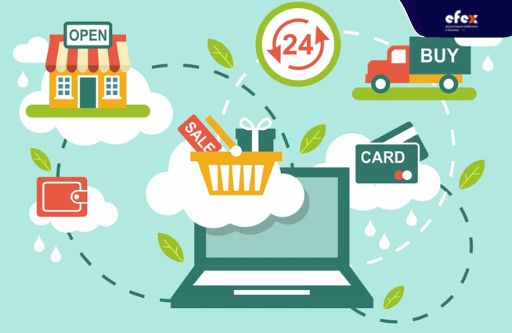
Concerning a fully omnichannel retail strategy are the following:
👉 Read More: What Is Omnichannel Fulfillment: Strategy And Model
👉 Read More: What is Omnichannel Retail: Definition and Benefits
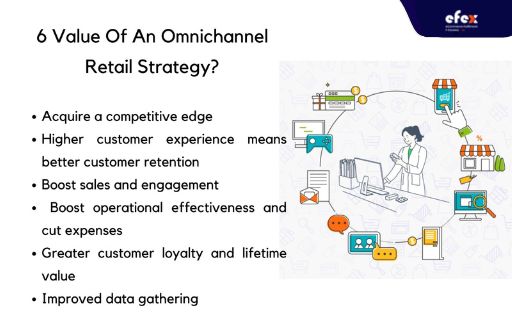
Even if your company is not omnichannel, your clients already are. In order to compare various items and offers, 4 in 5 people who shop in physical stores surf the web before their decision-making step. In contrast, buyers who make an online purchase go to a real store to test the goods and size.
In reality, an amazing 73 percent of consumers utilize several devices and channels during a single shopping trip. You get a competitive edge and prevent losing a marketing opportunity since a consumer noticed a competitor's product in a place where your brand isn't available by being in stock on all channels where your customers are.
What do your clients expect? Regardless of the channel of communication, 90% of customers throughout the world desire omnichannel services and want businesses to be aware of their prior choices. They also expect that experience to be consistent across all channels and convenient.
Additionally, positive client experiences are becoming more and more crucial. Customers are now 33 percent more likely to have abandoned a beloved brand following just one negative experience than they were three years ago. "Wasn't customized enough" or "wasn't handy" were the two most often given reasons for the poor experience. Keep in mind that maintaining your current customer is far more profitable than finding new ones.
A five-fold increase in profit is correlated with every percentage point increase in client retention. By choosing the channels which come easily and comfortably to them, customers are given the freedom to define their own concept of a "pleasant experience" by removing barriers across various business channels.
Implementing your sales and marketing approach omnichannel will take some early research, but the investment of time and money will be worthwhile. A customer's value increases with the number of channels they utilize. Customers overspend with a brand simultaneously online and in-store for every extra channel used.
How much was determined by a Harvard Business Review survey of 46,000 consumers Compared to single-channel buyers, omnichannel customers spend more than 4% on each in-store purchase and more than 10% on online purchases. The best thing is that each extra channel you add results in increased expenditure.
For example, in-store spending increases by up to 9% for customers who use 4+ channels. Conversely, multichannel marketing strategies that employ three or more channels beat those that use only one or two by generating up to 250 percent greater interaction.
This implies that including just one extra channel into your overall approach might be the straightforward move that significantly boosts your earnings.
Your company will run more profitably and cost-effectively by adopting an omnichannel retail strategy. A pleasant linked experience with a brand is preferred by 65 percent of consumers above effective advertising. When people are totally engaged with your brand, word of mouth and the customer experience will serve as your advertisement.
According to Deloitte, omnichannel maximize the effectiveness leading to higher marketing performance and lower expenses. In comparison to repeated attempts per customer on each touchpoint, allowing the usage of shared data across all channels helps to collect and analyze a customer's data just once, considerably reducing the collection of data and handling expenses.
You can increase the effectiveness of your head office activities by unifying all of your various channels under a single omnichannel control center as opposed to using a distinct strategy execution for each channel.
The net profit attributable to a client's whole future relationship is known as the value of a customer's lifetime. Omnichannel clients not only pay more money for a single purchase; however, they also buy more frequently and are more committed to your brand.
Additionally, brand-connected, devoted customers spend twice as much as disinterested ones. Omnichannel consumers have five times better lifetime value for the company, which leads to more sales without increased acquisition costs and more profits.
Retailers who follow their consumers via several channels have more opportunities to gather data and give the customer that data right away through a better and more personal experience. Better customer data gives you insights on how to develop offers and content that will result in a purchase.
This helps you make marketing judgments regarding the many consumer categories you serve, the preferred channels they use, and their specific purchasing patterns, which in turn helps you develop your customer care strategy. In order to inform your purchasing and merchandising staff on product offerings and allocation planning, the items receive increased customer involvement per channel.
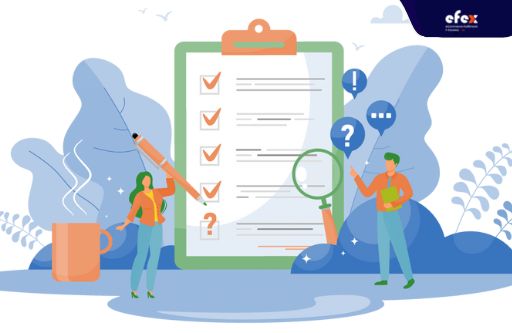
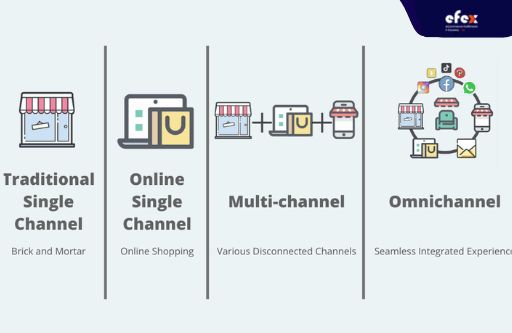
Finding out which platforms, media, and devices your customers use regularly is the first step in developing a perfect omnichannel retail strategy. This covers their favorite places to visit and hang out as well as the events that drive them forward in life. There is no use in wasting money on eBay if you are aware that none of your clients utilize it. So don't assume. Instead, research.
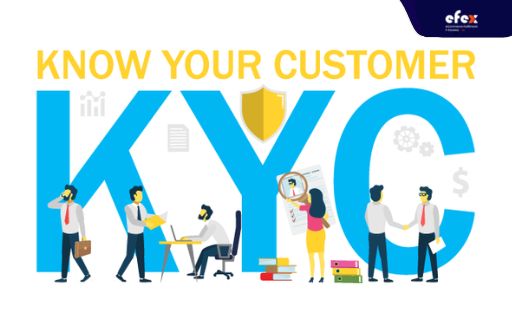
Examining the Acquisition reports in Google Analytics is a simple approach to identifying the most popular channels for your company. There, you can discover which particular locations are bringing visitors to your website. In other words, you can observe how buyers find your company.
To take it a step further, you can view the usual "funnel pathways" individuals take before converting by running various attribution analyses in your Multi-Channel Funnels area. You may get a general picture of the most crucial touchpoints for your company by thoroughly analyzing this data.
It's time to expand on your understanding of individual platforms to simplify or improve in order to create an omnichannel purchase experience.
Having each touchpoint shoppable is a crucial aspect of developing an omnichannel retail strategy. Similar to how Disney operates its website, mobile app, as well as theme parks. Disney has the chance to earn sales every time you interact with them. A product that a customer adds to their cart on your website must also be available on their mobile app.
They require product recommendations based on their prior product browsing if they come on Facebook. On websites like Pinterest, you may employ the same tactic. They now enable shoppable buttons, offering you a further access point to your online shop.
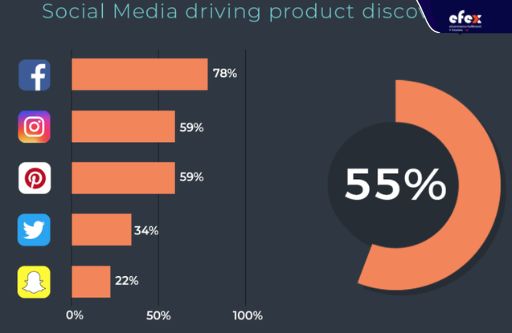
With these extensive, mutually beneficial links across channels, you might launch marketing campaigns on social media, increase traffic to your website, encourage visitors to look at how other people are using your product on Pinterest, and have them make a purchase there. The opportunity to make every client touchpoint shoppable is practically endless.
Connecting the two is essential if your retail plan includes either online or physical sales. In the modern world, I t is insufficient to just be present on both channels, but where customers rarely buy from you right away. Both online and offline, customers want to feel a connection to your brand.
Before they visit, they choose to see what is available. On the way to the shop, they like to add that product to their basket so they can have it ready for pickup when they arrive.
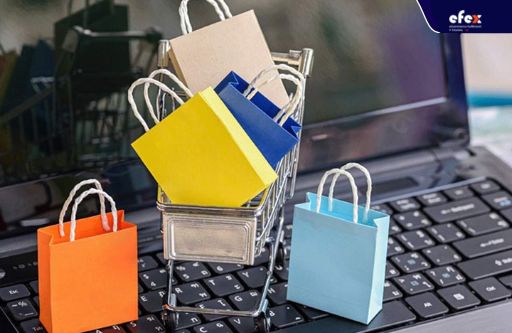
This strategy is already being used by big-box retailers like Office Depot in the omnichannel environment. To connect online and physical visitors, they now employ Local Inventory Ads on AdWords. With seamless user experiences from online to offline and vice versa, they have experienced a 3X greater return on investment with this omnichannel connection.
For big inventory businesses, creating product catalog feeds that function with AdWords Shopping advertising like this is frequently a complicated, time-consuming, as well as technical challenge.
Another example is the Sephora smartphone app, you may witness an online-to-offline interaction. You may use their app to locate out-of-stock goods or hunt for exclusive discounts through their loyalty program when you purchase in-store. You may digitally test the colors of their items using the app, then add them to your shopping basket for future in-store purchases. This way, the cycle resumes and the sales keep coming in.
The app is currently linked to your actual gift cards. Your balance is updated online each time you make a purchase. Research by IDC found that customers who can switch on any channel had a 30% greater lifetime value. A strong omnichannel retail strategy avoids concentrating on a particular final destination.
👉 Read More: 8 Examples of Omnichannel Retail with Specific Profits and Improvement
According to Google's report Omnichannel Shoppers: An Emerging Retail Reality: The savviest merchants make sure their omnichannel marketing plans are designed to encourage conversions on any channel. The ultimate objective shouldn't be to generate revenue on a single platform.
Instead, sales should be able to happen smoothly across all platforms and sync flawlessly. Your omnichannel sales and marketing strategy should be unified. Just the tip of the iceberg involves making every touchpoint shoppable and combining online and physical traffic.
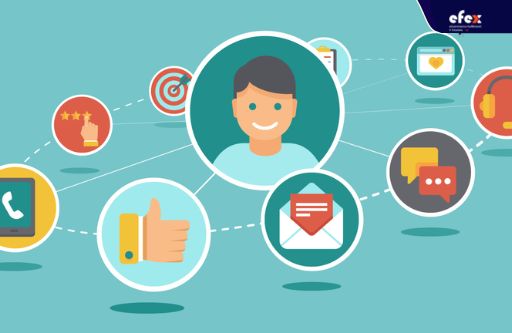
When a consumer enters your online business, a brand chatbot welcomes them and offers them a first-time discount code in exchange for creating an account. The consumer establishes a profile, shops about, and takes three closeups of a bucket bag. On each product page, they see customized outfit suggestions.
However, they go without buying anything.
The buyers see an editorial photo of the bucket bag later in the day while they are surfing Instagram on their phone and it is more centered on the lifestyle of your company. Instead of trying to convince the client to buy anything, this initial retargeting tries to inform and inspire them about your brand environment.
The buyers return to your online store after like what they saw on Instagram. Your brand chatbot gives them a customized style session while reminding them that their first-time discount is still awaiting them. The consumer sees how they might style the bucket bag they looked at the day before after completing a brief, guided style discussion with the chatbot, but they only utilize their discount ticket to buy a blouse from that advice.
In addition to introducing itself and showing the consumer three various ways to accessorize an outfit with the bucket bag, your brand chatbot sends the customer a WhatsApp message. This draws attention to additional product categories offered by your company that are pertinent to that clientele.
Additionally, provides the store's address to the consumer and lets them know there is a real site nearby where they may pick up the bag.
By checking their customer profile from the mobile app, the consumer enters your store and is immediately recognized. For large flagship shops, the app displays a map of the space, emphasizing each category's location as well as any current in-store promotions that are pertinent to the user's profile and browsing behavior.
To read product information and reviews, the consumer scans the barcode on the bucket bag using their mobile app. The consumer has expressed interest in the bucket bag, thus a store associate equipped with a clienteling tablet offers to show them more bucket bags from another brand.
The buyer is exposed to different media forms as the retargeting develops. The consumer discovers a brief video on Facebook that showcases the bucket bag they kept. The consumer messages your company's chatbot on WhatsApp as they are traveling to purchase the bucket bag and matching clothing. Your customer gets their order the following day after the chatbot completes the deal.
The buyer visits the online store from their desktop to examine their omnichannel cart and selects a necklace that is suggested to go with the outfit. Nevertheless, they must leave the house since they don't have much time to spare to make it to an appointment.
You send your customer an email outlining how to dress up the bucket bag they just bought for a more professional office appearance because you know they work in a formal field. And invite them to a style lesson you're hosting in-store.
👉 Read More: Order Management System: Definition, Process And Value
👉 Read More: Order Management System For Ecommerce: Definition, Key Effect, Benefit
The omnichannel strategy would have appeared an absurd decade ago. But today it's accepted as the norm. Before buying a product, the majority of consumers visit many touchpoints. Missing the deep integration and limiting yourself to only one or two channels might hurt your long-term success. Your omnichannel retail strategy should start with these recommendations. If you find this article helpful, do not hesitate to follow us via our fanpage and Efex to get more!
